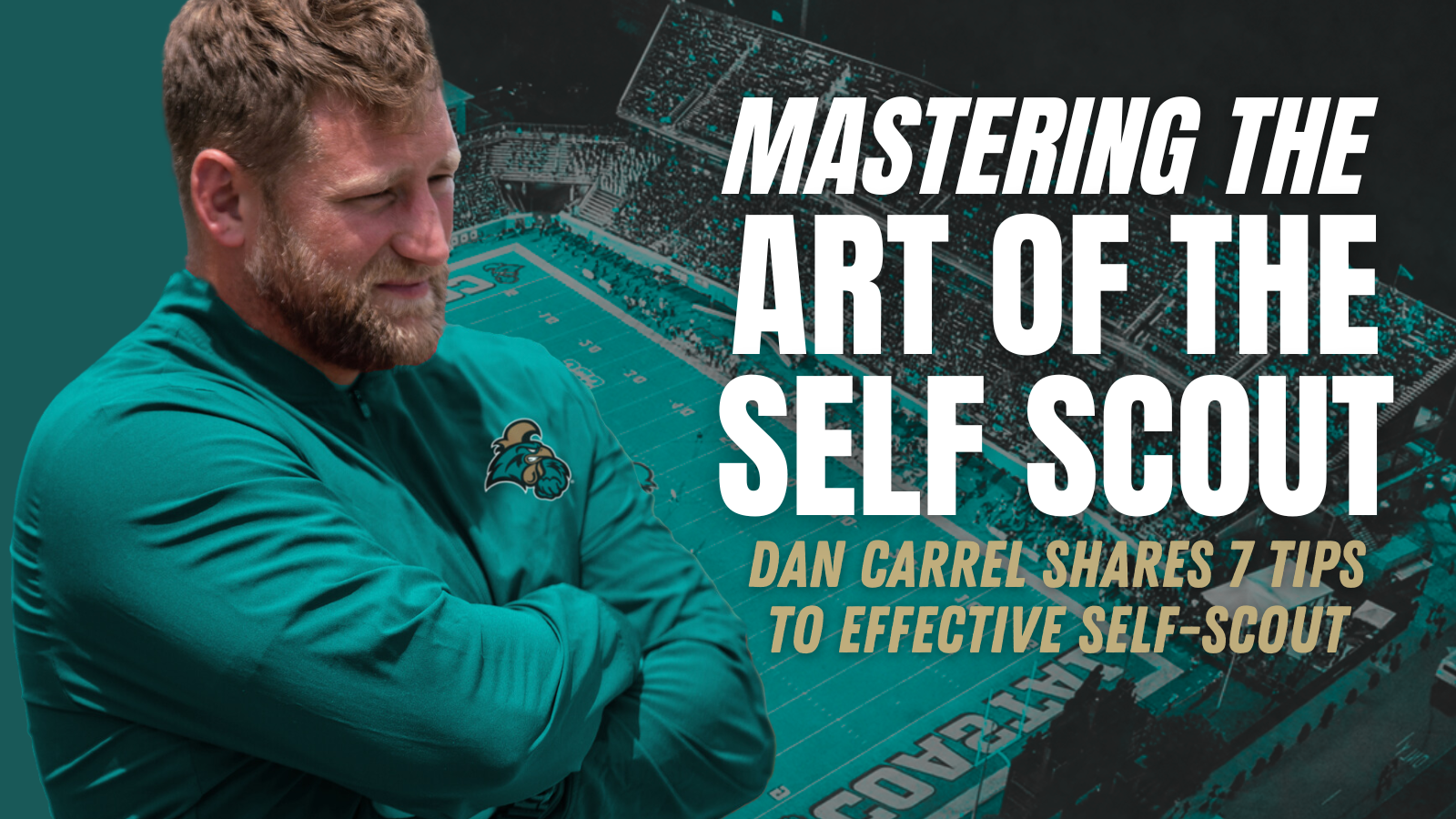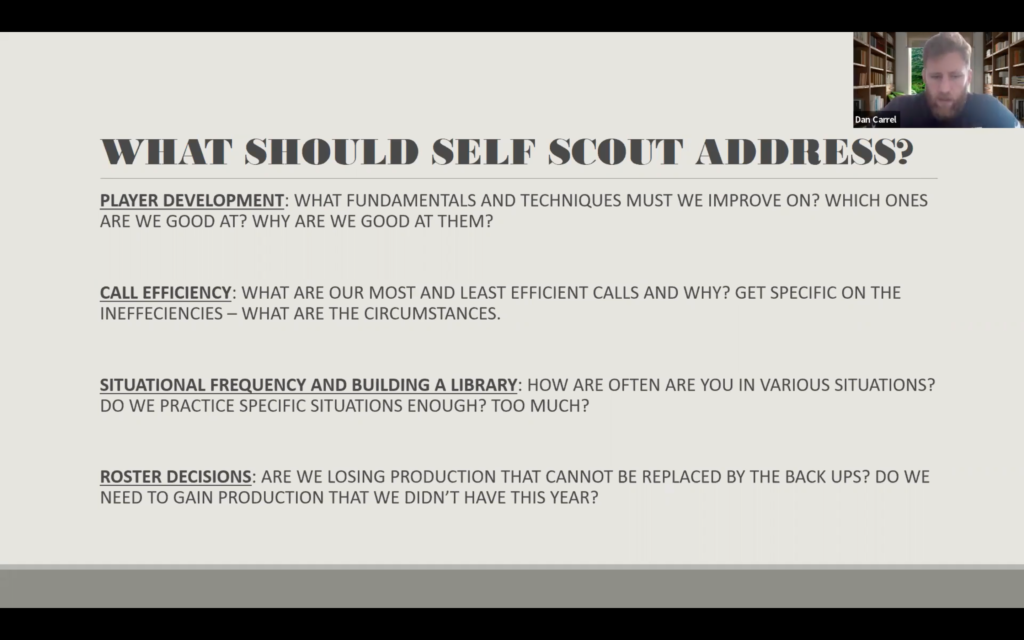
As a defensive coordinator, your primary goal is to build a relentless, disciplined, and adaptable defense. One of the most powerful tools to achieve this is the self-scout process. While it’s often overlooked or treated as a routine, a well-executed self-scout can be the difference between a defense that merely competes and one that dominates. Dan Carrel, the Co-Defensive Coordinator for Coastal Carolina, shared his insights on the key components of an effective self-scout. Let’s dive into how you can use these principles to elevate your defense.

1. Player Development: The Foundation of Success
Self-scouting starts with a deep dive into player development. Carrel emphasizes the importance of understanding which fundamentals and techniques your players excel at and why. It’s not enough to focus on what isn’t working; you must also analyze what’s going well. If specific techniques are consistently successful, identify the factors contributing to this success. This could involve the amount of practice time dedicated, the emphasis placed by coaches, or even how instructions are communicated. Understanding these elements allows you to replicate success in other areas and identify gaps in your coaching approach.
2. Call Efficiency: Digging Deeper into Performance
One of the core aspects of self-scouting is analyzing call efficiency. It’s easy to spot calls that aren’t working, but Carrel suggests further dissecting why they are inefficient. Here are some questions to start your in-depth analysis:
- Are the players struggling with execution?
- Is the timing of the call off?
- Or are there specific situational factors at play?
By understanding the root causes of inefficiency, you can make informed decisions about adjusting, improving, or discarding specific calls. Remember, persistence in a failing call can be as detrimental as abandoning one without proper analysis.
3. Situational Frequency and Building a Library
Situational awareness is another important aspect, and Carrel highlights the importance of tracking how often your defense encounters specific scenarios, such as red zone situations or third-and-long. By building a library of these scenarios, you can better prepare your defense for what they will likely face in games. This preparation ensures you’re not over-practicing rare situations while neglecting frequent ones. Carrel also stresses the importance of maintaining a library of how different coordinators approach these situations, giving your defense a tactical edge.
4. Roster Decisions: Planning for the Future
An often overlooked aspect of self-scouting is evaluating your roster with a forward-looking perspective. Carrel advises asking tough questions about player production and whether upcoming players can replace the output of those leaving. This evaluation isn’t just about replacing numbers; it’s about understanding the broader impact on your defense. For instance, if you’re losing a player who made 100 tackles last season, consider whether those tackles can be spread across the remaining roster or if adjustments to your scheme are necessary.
5. Start Early: The Key to Efficient Self-Scouting
Carrel is adamant that the self-scout process should not begin at the end of the season. Instead, it should be integral to your planning before the season starts. Setting your self-scout process in the summer or pre-season allows your staff to collect and organize data throughout the season. This preparation means you can efficiently analyze your performance during bye weeks and at the season’s end rather than scrambling to gather information when knee-deep in off-season duties.
6. Tackling: The Essence of Defense
Tackling is the cornerstone of any defense, and Carrel advises creating detailed cut-ups of missed tackles to identify patterns and inform your practice focus. By categorizing tackles into specific situations—such as profile or sideline tackles—you can tailor your drills to address the areas where your defense struggles the most. The goal is to continually refine your tackling circuits based on real game data, ensuring that your players are prepared for the types of tackles they’ll face most often.
7. Organize and Preserve Your Insights
Finally, Carrel suggests a meticulous approach to note-taking and organizing your scouting insights. By creating a “game book” that includes all your notes, drawings, and reports from each game, you build a valuable resource that can be referenced in future seasons. This digital archive preserves your insights and streamlines your preparation process, allowing you to revisit challenges and solutions quickly.
Conclusion
Self-scouting is more than a post-season chore; it’s a dynamic process that should inform your coaching throughout the year. By following Dan Carrel’s approach—focusing on player development, call efficiency, situational preparation, and meticulous organization—you can turn self-scouting into a powerful tool that drives your defensive success. Remember, the ultimate goal of self-scouting is to evaluate and elevate your defense, ensuring that you’re not just playing the game but mastering it each season.
Coach Carrel’s entire presentation can be found here:
Coach Carrel joined use for the 2022 season and shared insightful defensive ideas:
Defense with DC Serieshttps://coachandcoordinator.com/defense-with-dc-series-2022/


